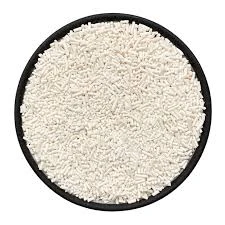
sodium metabisulfite na2s2o5
Understanding Sodium Metabisulfite (Na₂S₂O₅) Properties, Uses, and Safety
Sodium metabisulfite, with the chemical formula Na₂S₂O₅, is a white crystalline powder that is widely utilized across various industries due to its versatile properties. As a chemical compound, it plays a crucial role in food preservation, bleaching, and water treatment processes. Understanding its characteristics, applications, and safety measures is essential for those who work with or consume products containing sodium metabisulfite.
Chemical Properties
Sodium metabisulfite is often found in its anhydrous form, which is hygroscopic, meaning it readily absorbs moisture from the air. When dissolved in water, it forms sodium bisulfite (NaHSO₃), contributing to its effectiveness as a reducing agent. The compound has a pH of approximately 4.5 in solution, making it mildly acidic. Its soluble nature makes it easily incorporated into various applications, enhancing its utility.
Applications
1. Food Preservation One of the most common uses of sodium metabisulfite is in the food industry, where it serves as a preservative and antioxidant. It helps prevent enzymatic browning and spoilage in fruits and vegetables. For instance, it is often used in the preparation of dried fruits, wines, and certain canned products. Additionally, it inhibits the growth of bacteria and fungi, extending the shelf life of perishable goods.
Understanding Sodium Metabisulfite (Na₂S₂O₅) Properties, Uses, and Safety
3. Textile and Paper Industry Sodium metabisulfite is used as a bleaching agent in the textile and paper industries. It effectively removes chlorine and is a preferred alternative for bleaching processes, providing a safer and more environmentally friendly method compared to harsher chemicals.
sodium metabisulfite na2s2o5

4. Water Treatment In water treatment, sodium metabisulfite serves as a dechlorination agent, removing residual chlorine from drinking water and wastewater. This process is essential for ensuring that treated water is safe for consumption and does not harm aquatic life when released into natural water bodies.
5. Photography In photography, it is employed as a reducing agent in developing solutions, contributing to the elimination of unwanted silver halides and enhancing the overall quality of photographic images.
Safety Concerns
Despite its widespread usage, sodium metabisulfite does pose some health and safety concerns. It can cause allergic reactions in sensitive individuals, particularly those with asthma or sulfite sensitivities. Common symptoms may include respiratory issues, skin rashes, and digestive problems. Therefore, food products containing sodium metabisulfite must be appropriately labeled to inform consumers.
When handling sodium metabisulfite in industrial settings, safety precautions are essential. Proper ventilation is necessary to avoid inhalation of dust, which can irritate the respiratory tract. Personal protective equipment, including gloves and goggles, should be worn to prevent skin and eye contact.
Conclusion
In summary, sodium metabisulfite (Na₂S₂O₅) is a multifaceted compound with significant applications across various sectors, particularly in food preservation, beverage production, and industrial processes. While it offers numerous benefits, awareness of its potential health risks is crucial for safe handling and consumption. By understanding both its utility and safety measures, individuals and industries can effectively harness the advantages of sodium metabisulfite while minimizing any associated risks. As research continues to expand the knowledge surrounding its applications, sodium metabisulfite remains a key player in enhancing food safety, quality, and production efficiency.
-
Understanding Synthetic Rubber OptionsNewsApr.27,2025
-
Trichloroisocyanuric Acid: Essential for Clean and Safe WaterNewsApr.27,2025
-
Sodium Dichloroisocyanurate: Key to Safe Water TreatmentNewsApr.27,2025
-
Sodium Acid Pyrophosphate: Essential in Modern Food ProcessingNewsApr.27,2025
-
Essential Water Treatment ChemicalsNewsApr.27,2025
-
Denatured Alcohol and Its Industrial UsesNewsApr.27,2025
-
The Versatile Uses of Sodium BicarbonateNewsApr.24,2025
Hebei Tenger Chemical Technology Co., Ltd. focuses on the chemical industry and is committed to the export service of chemical raw materials.
-

view more DiethanolisopropanolamineIn the ever-growing field of chemical solutions, diethanolisopropanolamine (DEIPA) stands out as a versatile and important compound. Due to its unique chemical structure and properties, DEIPA is of interest to various industries including construction, personal care, and agriculture. -

view more TriisopropanolamineTriisopropanolamine (TIPA) alkanol amine substance, is a kind of alcohol amine compound with amino and alcohol hydroxyl, and because of its molecules contains both amino and hydroxyl. -

view more Tetramethyl Thiuram DisulfideTetramethyl thiuram disulfide, also known as TMTD, is a white to light-yellow powder with a distinct sulfur-like odor. It is soluble in organic solvents such as benzene, acetone, and ethyl acetate, making it highly versatile for use in different formulations. TMTD is known for its excellent vulcanization acceleration properties, which makes it a key ingredient in the production of rubber products. Additionally, it acts as an effective fungicide and bactericide, making it valuable in agricultural applications. Its high purity and stability ensure consistent performance, making it a preferred choice for manufacturers across various industries.











